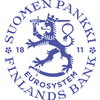Bank of Finland’s interim forecast: Sticky recovery in Finland’s economy

According to the Bank of Finland’s interim forecast, published today, the Finnish economy will contract by 0.5% for the full year 2024, and the recovery will be slow. The economy will then grow by 1.1% in 2025. Growth will gather pace somewhat in 2026, rising to 1.8%.
In the early part of this year, growth in the Finnish economy was subdued. Private consumption and private investment have been weak, and the fragile economic growth has relied on exports and public demand. The labour market has felt the effects of the sluggish economy, and inflation has slowed considerably.
The recovery of the Finnish economy in the immediate years ahead will be underpinned by various factors. Purchasing power will be supported by an improvement in employment, a moderate inflation rate and a rise in earnings. In addition, the export outlook will benefit from a strengthening of the euro area economy. Household and business confidence is expected to be restored gradually, and the financial markets are anticipating a step by step lowering of interest rates.
Inflation and unemployment
There has been a broad-based drop in inflation in Finland during the current year. The Bank of Finland’s inflation forecast for 2024 is 1.1%. The recovery in the economy will increase price pressures a little, and the tax and excise duty increases will raise prices. The inflation rate will rise in 2025 to 1.8% and then fall back to 1.6% in 2026.
The impact of the weak economic conditions has also been felt in the labour market, with a drop in the employment figures. The unemployment rate for the full year 2024 will rise to 8.3%, but will then decline as the economy improves.
Forecast risks
The risks surrounding the forecast are, in the short term, predominantly on the downside. Although there are already early signs of a turn for the better in manufacturing and exports, it is not certain that this will continue. Geopolitical tensions are adding to the uncertainties over the outlook for world trade. The biggest risks domestically concern how long consumers will continue to be cautious, and at what point the construction sector will eventually start to recover.
Positive surprises are also possible, especially towards the end of the forecast period. Consumer confidence and consumption could pick up more quickly than anticipated. A faster than expected rebound in construction could also further boost growth in the economy. The pace of economic recovery at turning points in the business cycle has often proved to be faster than initially expected.
Interim forecast, September 2024 (in Finnish)
Further information:
Juuso Vanhala, Head of Forecasting
firstname.lastname@bof.fi, +358 9 183 2696
Keywords
Links
Bank of Finland
The Bank of Finland is the national monetary authority and central bank of Finland. At the same time, it is also a part of the Eurosystem, which is responsible for monetary policy and other central bank tasks in the euro area and administers use of the world’s second largest currency – the euro.
Subscribe to releases from Suomen Pankki
Subscribe to all the latest releases from Suomen Pankki by registering your e-mail address below. You can unsubscribe at any time.
Latest releases from Suomen Pankki
Det är inte läge att skjuta upp lösningarna för Finlands offentliga finanser19.12.2025 11:00:00 EET | Pressmeddelande
Finlands offentliga finanser befinner sig alltjämt långt från balans. För att vända skuldsättningsutvecklingen krävs en betydande konsolidering av de offentliga finanserna och investeringar i tillväxt. Höjningen av de nödvändiga försvarsutgifterna försvårar den offentligfinansiella konsolideringen. Inflationen i euroområdet ligger på målet och ekonomin har vuxit något snabbare än förutsett.
Suomen julkisen talouden ratkaisuja ei kannata lykätä19.12.2025 11:00:00 EET | Tiedote
Suomen julkinen talous on edelleen kaukana tasapainosta. Velkaantumiskehityksen kääntäminen vaatii merkittävää julkisen talouden sopeuttamista ja investointeja kasvuun. Välttämättömien puolustusmenojen kasvattaminen vaikeuttaa tasapainottamista. Euroalueella inflaatio on tavoitteessa ja talous on kasvanut hieman ennustettua paremmin.
Finland’s decisions on public finances should not be postponed19.12.2025 11:00:00 EET | Press release
Finland’s public finances are still far from being in balance. Reversing the rise in public debt will require considerable fiscal consolidation and investments in growth. An expansion of essential defence spending will hamper the fiscal adjustment process. Inflation in the euro area is at target, and growth in the euro area economy has been slightly higher than forecast.
Återhämtningen i Finlands ekonomi går sakta framåt19.12.2025 11:00:00 EET | Pressmeddelande
Finlands ekonomi lämnar snart perioden med svag tillväxt bakom sig, men ingen kraftig tillväxt väntas under åren framöver. Inflationen är fortsatt måttfull och sysselsättningen stiger gradvis. Den stramare handelspolitiken och globala politiska osäkerheter samt eventuella åtgärder för konsolidering av de offentliga finanserna kastar en skugga över tillväxtutsikterna för ekonomin i Finland. De offentliga finanserna uppvisar alltjämt ett djupt underskott.
Suomen talouden elpyminen etenee maltillisesti19.12.2025 11:00:00 EET | Tiedote
Suomen talouden hitaan kasvun jakso on jäämässä taakse, mutta voimakasta kasvua ei lähivuosina ole odotettavissa. Inflaatio pysyy maltillisena ja työllisyys kohenee vähitellen. Talouden kasvunäkymiä varjostavat kauppapolitiikan kiristyminen ja kansainvälisen politiikan epävarmuudet sekä mahdolliset julkisen talouden sopeutustoimet. Julkinen talous säilyy syvästi alijäämäisenä.
In our pressroom you can read all our latest releases, find our press contacts, images, documents and other relevant information about us.
Visit our pressroom